- Print
- DarkLight
Product Updates - September 21, 2023
- Print
- DarkLight
Overview of Changes
| Components | Notes |
|---|---|
| Factory CONNECT |
|
| Factory ANALYZE |
|
| Updates/Fixes | This release also contains enhancements. See Updates/Fixes. |
Factory CONNECT: Offline Device Configuration Management
Experience seamless configuration control with Factory CONNECT. You now have the power to manage device configurations, whether they are online or offline. Access and update draft configurations effortlessly, ensuring that your changes are saved and ready to deploy after the device is back online.
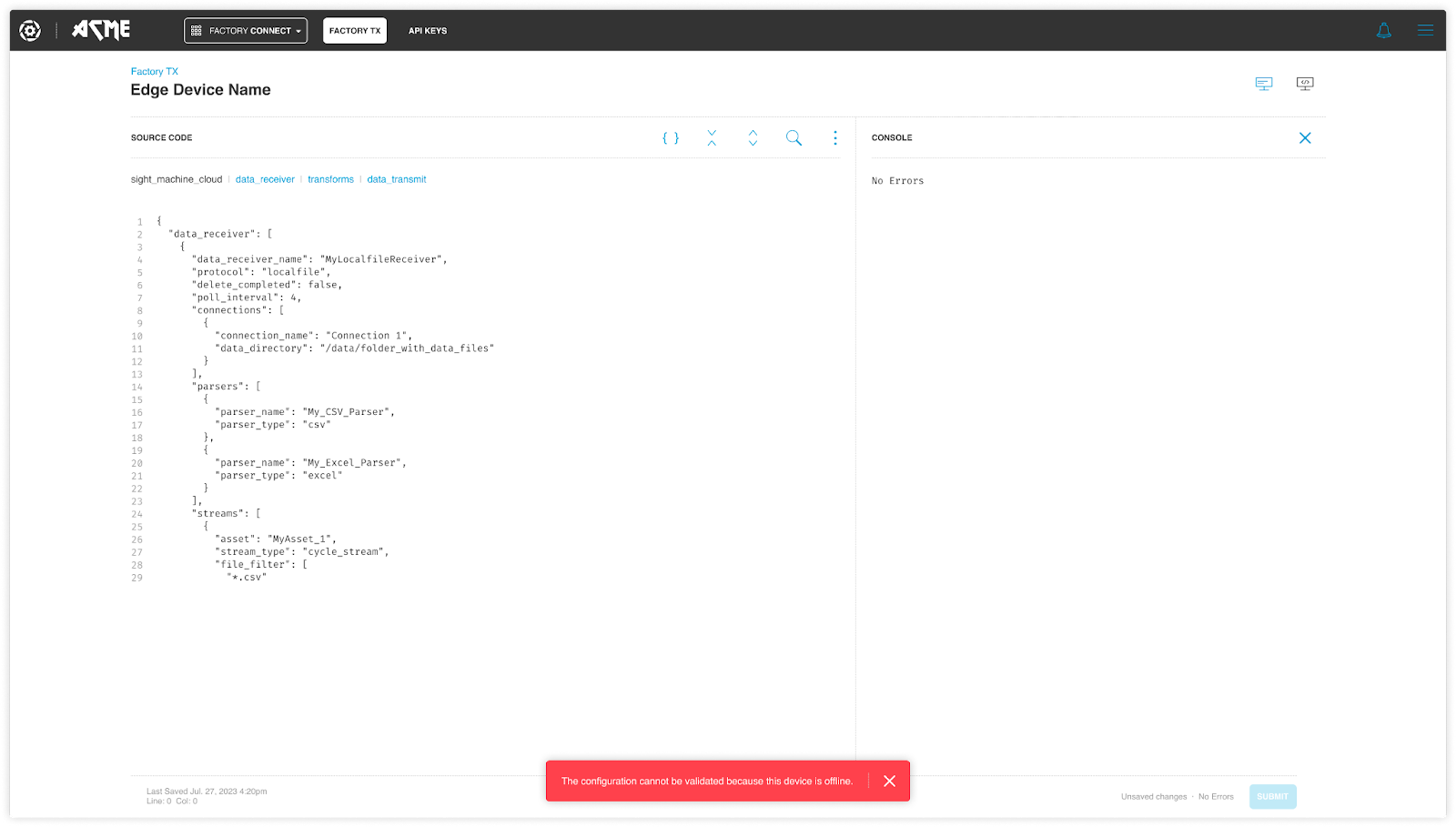
Factory CONNECT: Hash Collision Detection
Factory CONNECT detects and prevents clashes when multiple users are working on configurations at the same time. If another user deploys changes while you are working on your draft, you are alerted during the deployment process. Choose to either update to the latest version or cancel to secure your changes before transitioning.
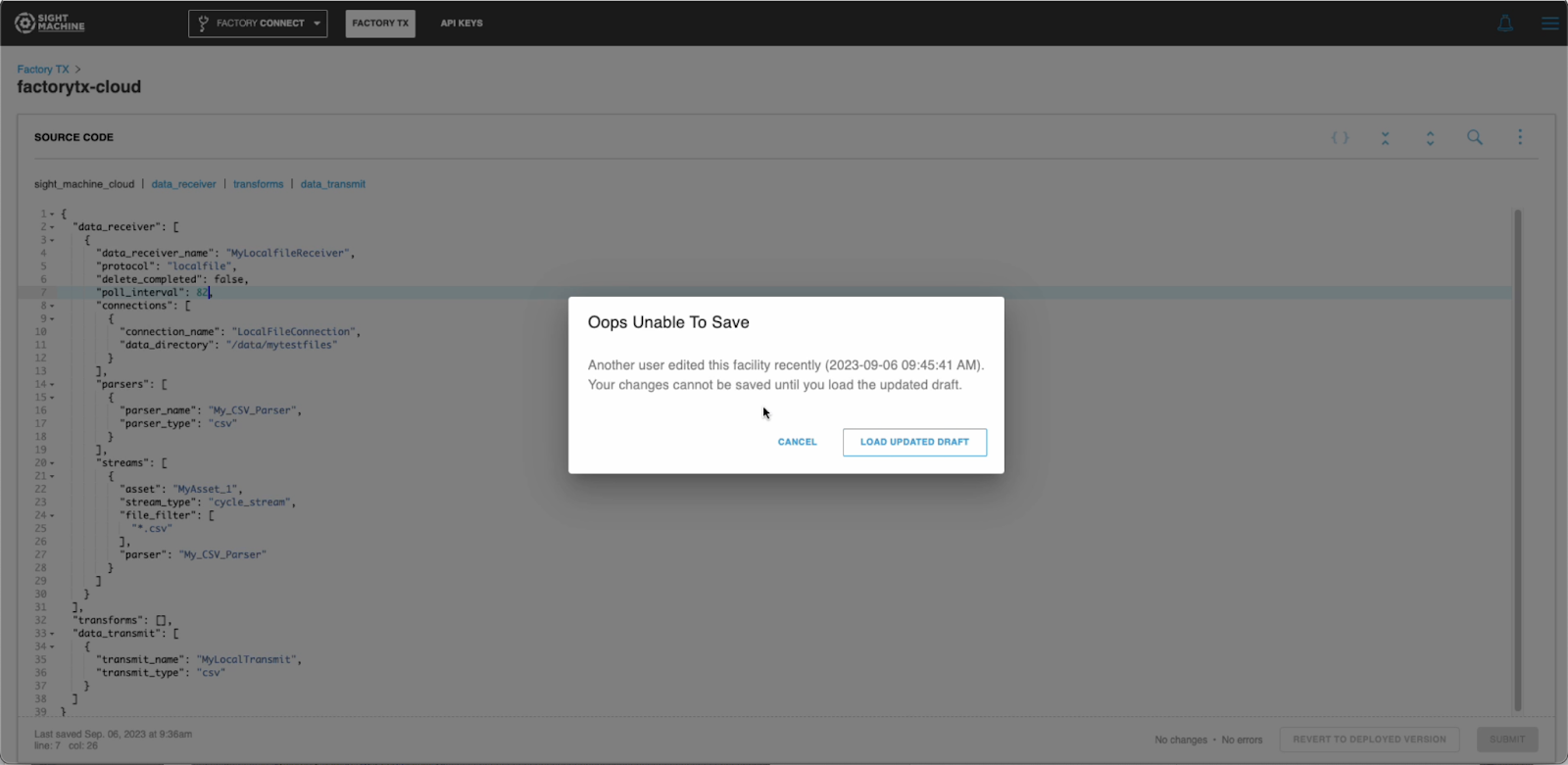
Coming Soon
- Draft vs. Deployed comparisons
- Robust revision history
Factory ANALYZE: German and Czech Localization
Factory ANALYZE now supports German and Czech. You can set language preferences for both the environment, as well as for individual users.
You can change the default environment language in Settings > Feature Config > Model Descriptions > Platform Language Locale.
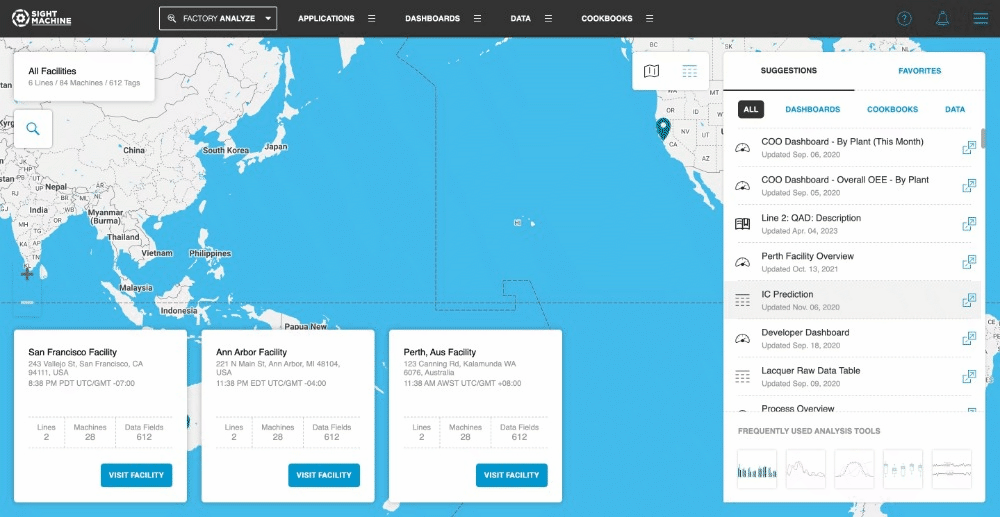
Individual users can change their own Language Preferences as part of their User Profile.
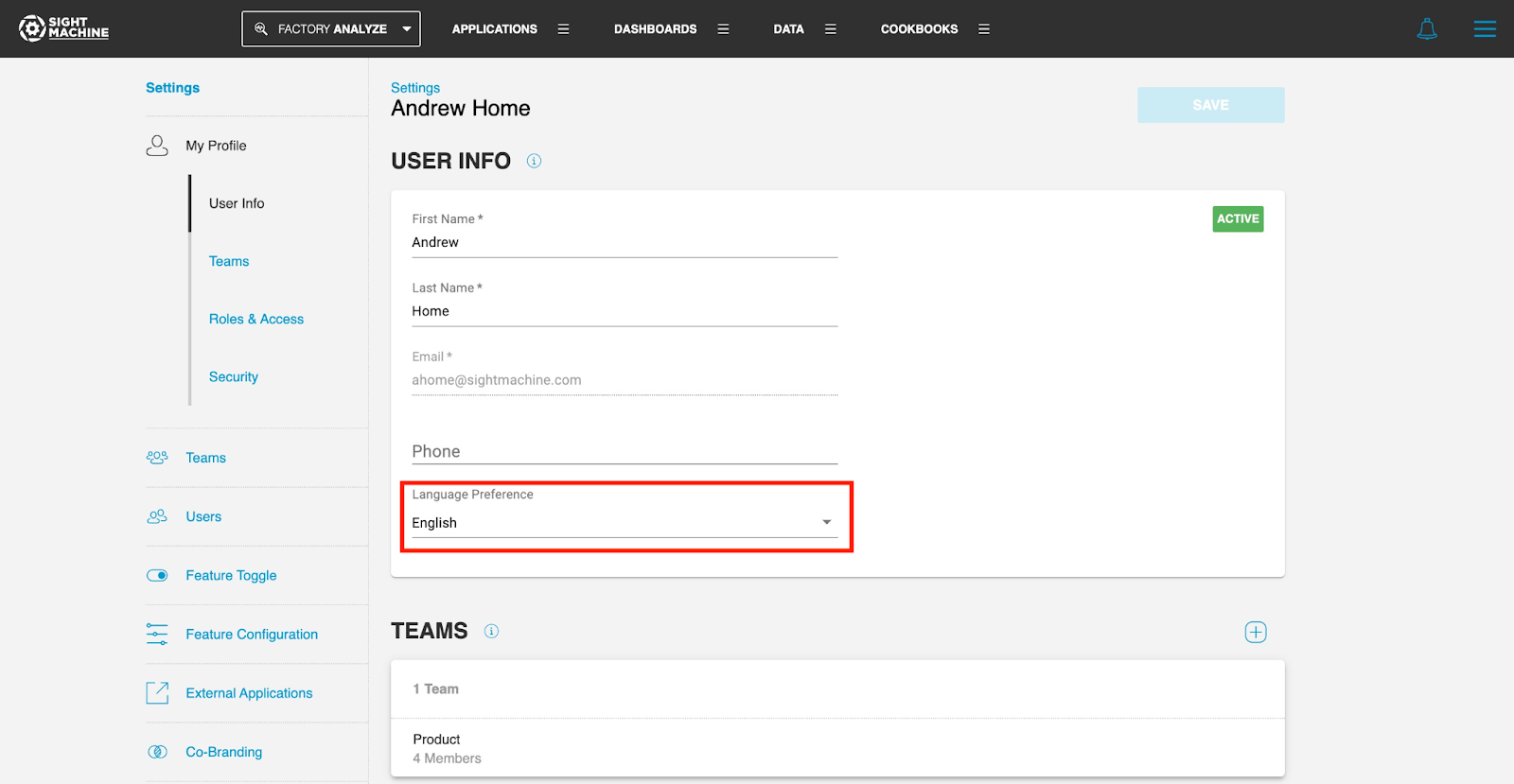
Contact your customer success representative to have language preferences turned on for your environment.
Factory ANALYZE: Variance Analysis 2.0
The latest version of the Variance Analysis application in Factory ANALYZE lets you study the variability of a large number of process parameters simultaneously.
There is no limit on the number of data fields that you can analyze. The Data Field picker in the sidebar lets you Select All available fields. After you select the data fields, the Variance Analysis tool displays and ranks all of the parameters in order of the highest amount of variability.
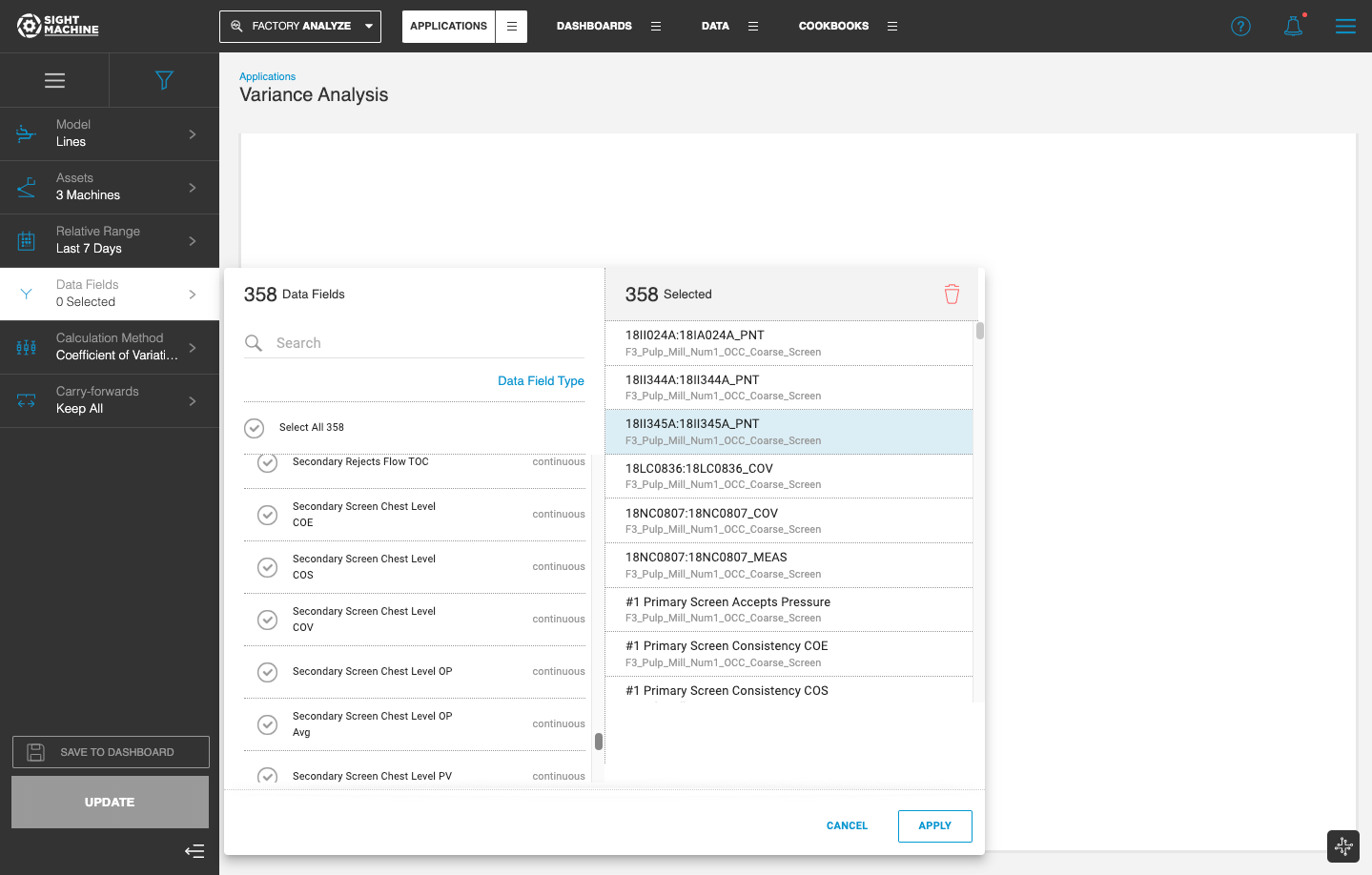
Parameters with little to no variation over the selected Time Range are not displayed in the Results table, but rather on the Information & Diagnostics tab.

The tool displays the histogram and the box plot for each parameter. The results table also presents the numerical values for various statistical properties.
You can select a Display mode and select the Chart and Table, Chart, or Table option, with the default display set to the parameter with the highest variation.
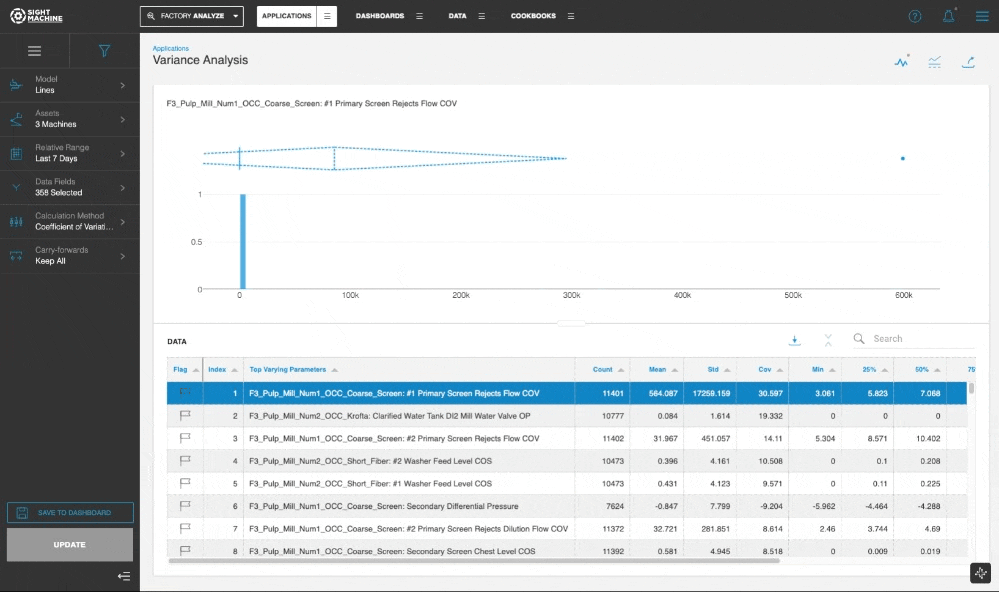
In the Chart and Table view, you can click through the table to update the visualization for the selected parameter.
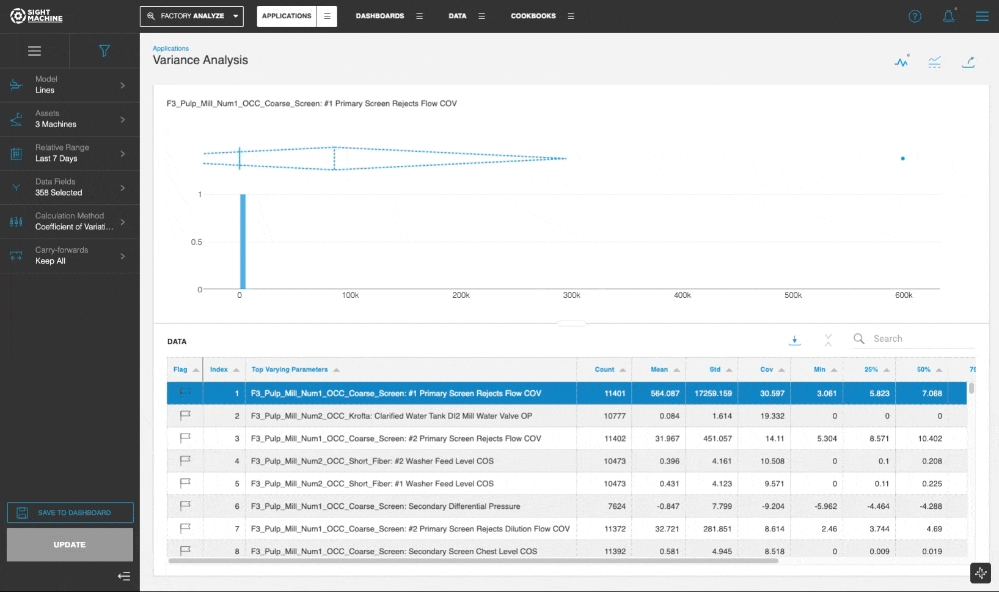
The default method for ranking the parameters is based on computing and comparing the Coefficient of Variation for all selected data fields. The Standard Deviation method is also available as an option for the Calculation Method.
Variance Analysis supports the Cycles, Lines, and Parts data models, enabling powerful analysis across multiple Machine Types.
Updates/Fixes
- Dynamic Operators/Default configurations for Jinja: To streamline part of the dynamic operator development workflow, certain actions in operator configurations now trigger automatic assistance. When you switch a Pipeline operator from the JSON parser to the Jinja parser, the system provides a Jinja-based default configuration. When you begin typing syntax that is used by Jinja while the JSON parser is active, the system asks whether you want to switch to the Jinja parser.

